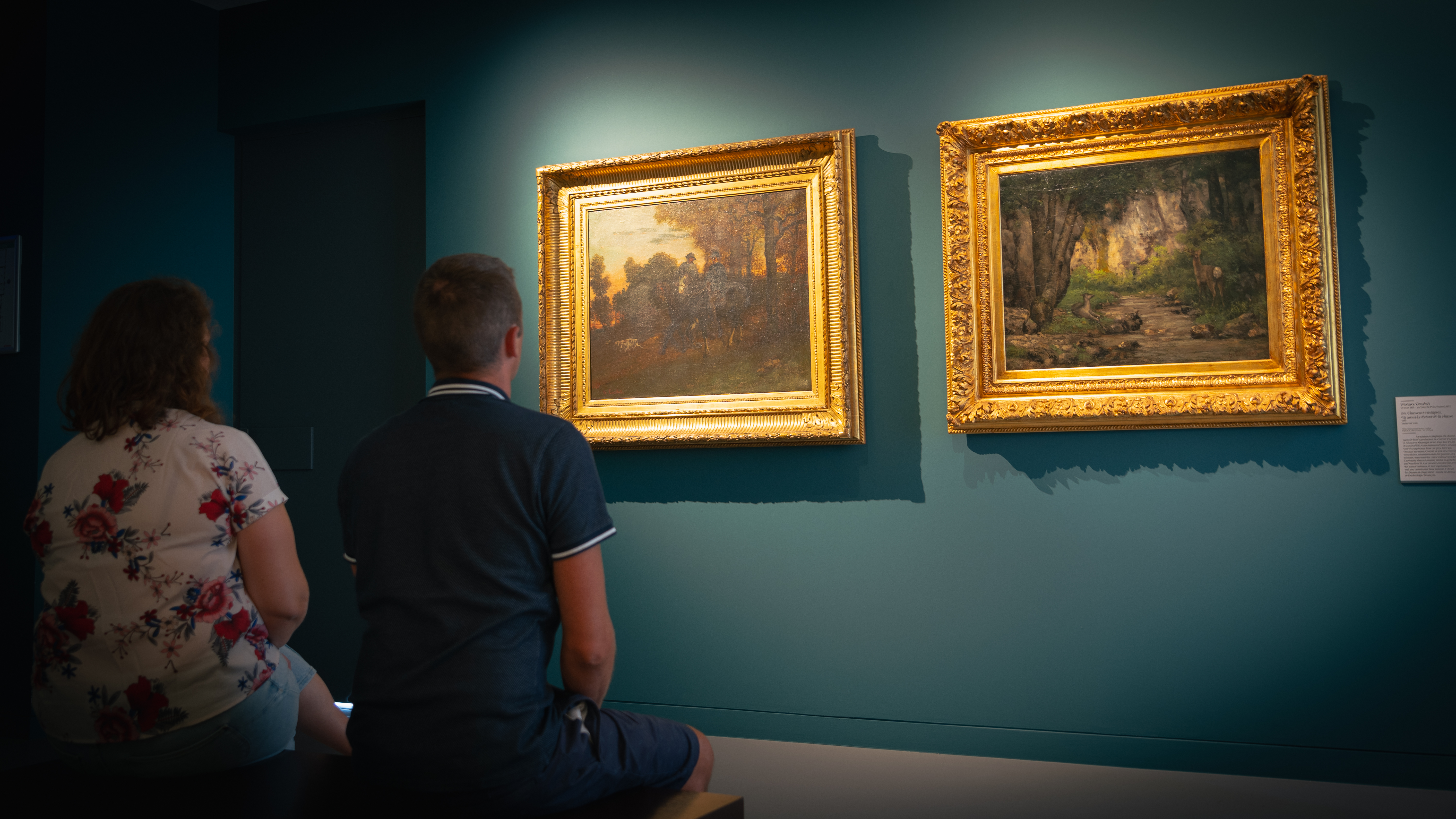Courbet the “realist” and the world
Works by the painter from Ornans are now to be found in many museums and private collections in capital cities and towns in France and all over the world, including Australia and Sweden. Three rooms are dedicated to him at the Metropolitan Museum in New York. It is also a tribute to the realist movement that Courbet initiated, along with other French artists such as Balzac and Champfleury, in the 1850s and which totally subverted the codes that had been established for centuries in the world of painting.
Courbet, one of the first “realists”
The realist movement appeared in Europe the second half of the 19th Century then spread across the world. It could be seen in literature with Honoré de Balzac, Champfleury (Jules François Félix Husson) and Louis Edmond Duranty and in painting with a certain number of artists, including Gustave Courbet. In a period marked by a confrontation between romanticism and classicism, realism opened a new way, portraying reality without idealisation and covering political or social themes.
Realism is not imitation
Realism is not an attempt to imitate reality. In Courbet’s case, it was a matter of finding his subject in the reality of the world around him. The painter wanted to portray the traditions, ideas and appearance of his era, highlighting his own individuality.
A contemporary of the early days of photography, Courbet occasionally used it in his work, as, for example, to paint the naked woman sitting behind him in The artist’s studio (between 1854 and 1855, Musée d’Orsay, Paris), then for The Château de Chillon (1874, Gustave Courbet Museum, Ornans, Ornans Council store-room). But, unlike photography, he wanted to give his personal vision of reality, which his contemporaries sometimes found difficult to understand.

Gustave Courbet
Le château de Chillon
1874
Huile sur toile
Ornans, musée Gustave Courbet, dépôt de la Ville d’Ornans
© Musée Gustave Courbet, photo : Pierre Guenat
Commissions from all over the world
For many years, Courbet was supported by a number of patrons, art-lovers from all over the world, who regularly commissioned paintings. This gave him considerable artistic freedom, particularly to produce large canvases and daring works. In the 19th Century, works of art circulated more freely all over the world, which is one of the reasons why Courbet’s paintings can be found in so many museums and private collections worldwide.
In the museums of Franche-Comté… especially in Ornans
Gustave Courbet painted his region and many of the museums in the Doubs pay tribute to him. The recently renovated Besançon Museum of Fine Art and Archaeology has some of the painter’s great works, such as The death of the stag (1867) and The farmers of Flagey returning from the fair (1850). In Pontarlier’s municipal museum you will find Self-portrait with a black dog (1842), while other works are on show in Salins-les-Bains, Lons-le-Saunier and, of course, the Courbet Museum in Ornans.
In Paris… particularly in the Musée d’Orsay
Gustave Courbet’s finest and most famous works may be seen in Paris, mainly in the Musée d’Orsay, where visitors can admire A burial in Ornans (1849-1850), The painter’s studio (1855) and The Origin of the world, painted in 1866 but not exhibited until 1995. The Petit Palais also has several of his works, including one of his many self-portraits Portrait of the artist, known as Courbet with a black dog (1844) and The girls on the banks of the Seine (1857). Even the Picasso Museum has a small canvas by the painter from Ornans in its collection, Chamois head (c. 1875).
All over France… particularly in Montpellier
A number of French museums have works by the painter from Doubs in their collections, such as the Musée Fabre in Montpellier, which exhibits the famous Self-portrait (Man with a pipe) (1848-1849) and The bathers (1853). The museums in Lille, with Vigil in Ornans (1848-1849), and Lyon also have a few of the painter’s canvases in their collections. Troyes, Le Havre, Marseille, Nantes, with The grain sifters (1854-1855),… Courbet’s paintings may be found all over France!
In North America … particularly in New-York
From the Canadian Museum of Fine Art in Ottawa, with The woman with the glove (1858) to the Saint-Louis Art Museum with The Comte de Choiseul’s greyhounds (1866), his paintings may also be found across North America, where several cities in the United States, such as Chicago and Philadelphia, are home to public or private collections including works by the painter. There is a particularly impressive collection of works by Courbet in New York, at the Metropolitan Museum of Art, where three rooms are dedicated to him, including The source of the Loue (1864) and View of Ornans (1850).
In Asia, South America … and particularly in Europe
The artist’s works may be found all over the world. Firstly in Europe, in Switzerland, where he stayed for many years until his death in 1877, but also in cities such as Saint Petersburg and Copenhagen. Some of the master of Ornans’ characteristic works are now in South America, such as Juliette Courbet at the age of ten, (1841) at the Argentinean National Museum of Fine Art in Buenos Aires and Portrait of Zélie Courbet (1847), at the Sao Paolo Museum of Art. Art-lovers travelling in Asia or Australia may be surprised to discover Landscape with stag (1873) in Sydney (Art Gallery of New South Wales) and Fox caught in a trap (1860) in the Ohara Museum of Art in Kurashiki (Japan)

Gustave Courbet
Le renard pris au piège
Vers 1860
Huile sur toile
Ornans, musée Gustave Courbet
© Musée Gustave Courbet, photo : Pierre Guenat




